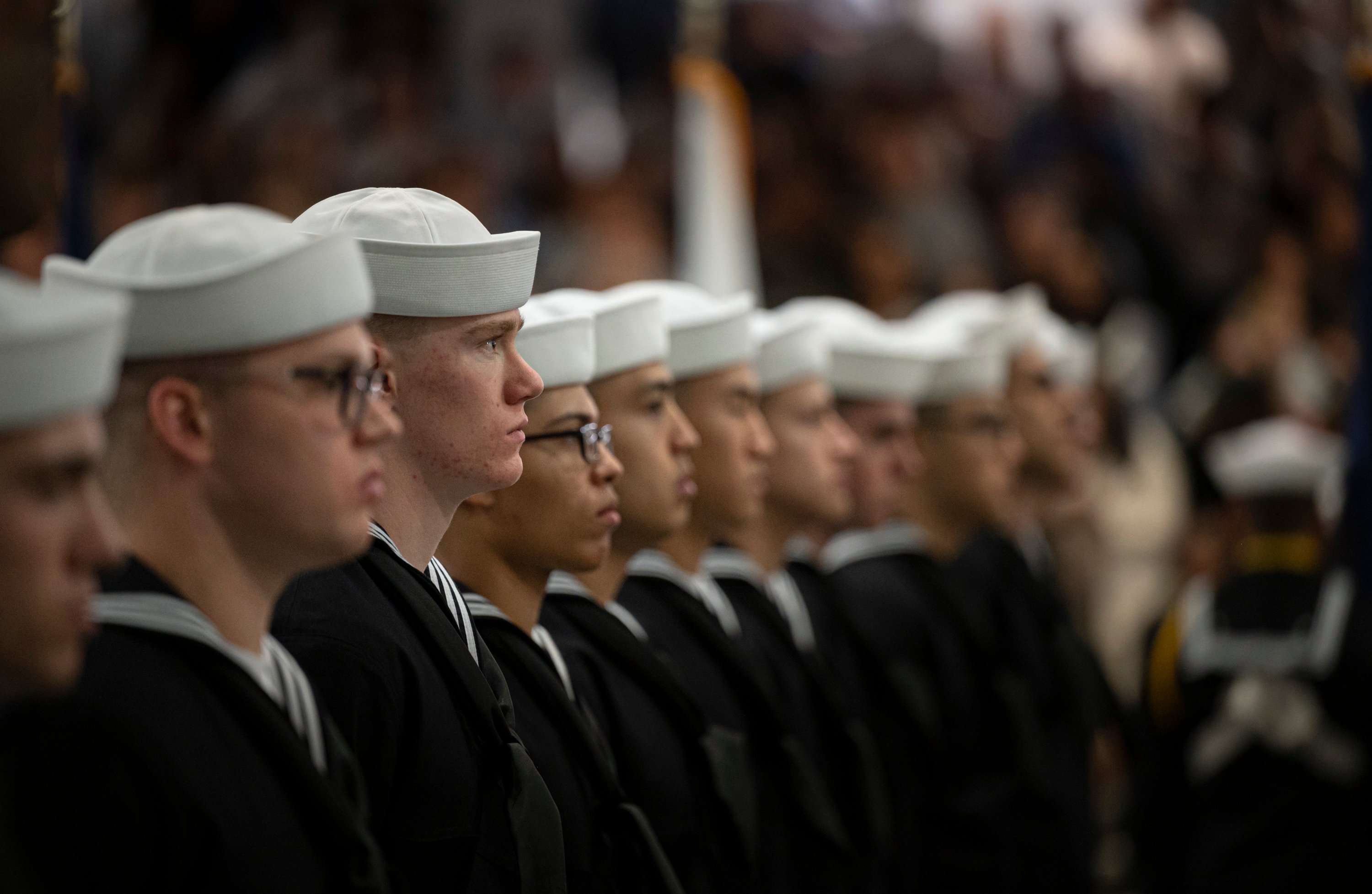
The Navy’s ongoing struggle to meet recruitment missions and the Marine Corps’ growing concerns over the shrinking pool of possible enlistees topped a Senate panel’s hearing on personnel issues facing the sea services last week.
The Navy predicts it will be 6,200 enlistees short of its 40,600 recruiting goal for Fiscal Year 2024, Vice Adm. Richard Cheeseman testified. Despite the likelihood of missing the goal, Cheeseman said the Navy is doing “significantly better than what we expected in the beginning of the fiscal year.” Earlier estimates by Navy civilian and uniform officials had the service missing mission by 6,700 enlistees.
“While I remain confident, I must acknowledge that these challenges exacerbate fleet manning shortages, putting additional stress on our force, which could negatively affect readiness and potentially impact future retention, in an environment where retention is ever important,” Cheeseman said in his written statement to the Senate Armed Services personnel subcommittee.
The service added what it missed last fiscal year to the current goal, Cheeseman previously told the House Armed Services personnel subcommittee last month.
“It’s about work requirements in the fleet that we need to maintain so that we can build out of that [hole],” Cheesemansaid at the time.
“We are making some headway” in reducing the shortfall, he added Wednesday, but the deficit in enlistees puts more emphasis on retaining sailors and officers. A large portion of Cheeseman’s prepared statement for the Senate panel is devoted to “the myriad of initiatives” the Navy has taken to boost recruiting from approaches to waivers and raising eligibility age.
For the Marine Corps, the biggest recruiting concern is that the starting pool is only two percent of the population, Lt. Gen. James Glynn said in his opening remarks.
“This requires Marine recruiters to focus on finding individuals to ship in the near-term, impacting their time to physically and mentally prepare for the rigors of the transformation process to Marine,” he said. We are working to grow the start pool, but it is a slow and deliberate process.”
During an earlier part of the Senate hearing, Ashish Vazirani, the acting under secretary of defense for personnel and readiness, said the administration is requesting a change in law that would require high schools to allow military recruiters to visit campuses four times per year.
In addition, the military “wants access to lists of students” in the same way that colleges, universities and private businesses have.
Last year’s National Defense Authorization Act required schools to provide those lists but did not specify in what manner.
Vazirani told the panel that current law only requires schools to open their doors to recruiters twice a year and acknowledged that some schools severely restrict where and when recruiters can talk with students.
Glynn said access to the schools and student directories is vital for recruiting for all the services. In his written testimony, he added: “the biggest reason we hear from young people for not joining the Corps is that they simply weren’t aware of the potential opportunities. Maintaining consistent access to high schools and student directories remains a top priority for ensuring continued opportunity for all qualified individuals to serve.”
Their parents and influencers – teachers, coaches, other close relatives – have never been in the armed forces, Vazirani said. He and Glynn both endorsed the “national call to service” campaign.
“The best recruiters with the best tools cannot assemble a high-performing force without the support of national leaders—such as government leaders, community leaders, parents, veterans, business leaders, teachers and other influencers—in talking about public service and military service with youth[s] in their communities,” Vazirani told attendees at a conference on the 50th anniversary of the All-Volunteer Force earlier this year.
In addition to paying attention to recruiting, both services are focusing on retention as a way to ensure end strength. The Navy is expanding its ability to offer more geo-stability through assignment policies that allow a sailor to take a harder billet or an at-sea extension in exchange for a location-based billet.
In his written testimony, Cheeseman said the retention focus for E-1s to E-4s and O-1s to O-3s has been on “aviation, explosive ordnance disposal, surface warfare, submarine warfare, and naval special warfare.” The Marine Corps is also focusing on aviation retention.





